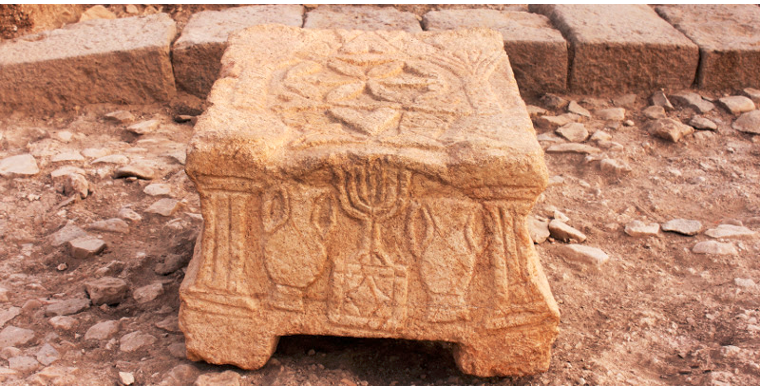Is This Stone the Clue to Why Jesus Was Killed?
By CANDIDA MOSS
THE DAILY BEAST
http://www.thedailybeast.com/
December 13, 2015
A stone found in Israel with carvings of a chariot may be the key to understanding the charge of blasphemy leveled at Jesus Christ.
Just in time for Hannukah, news emerged last week of the remarkable discovery of carved block in Magdala, in northern Israel.
The block was discovered in 2009 during construction of a Christian pilgrimage resort. The controversial religious order the Legionnaries of Christ, who own the land and are planning the resort, unearthed the remains of a first-century synagogue and began formal excavations.
The site initially made news for its ties to the world of the New Testament, as it is presumed by most to be the hometown of Mary Magdalene, the follower of Jesus. Excavations revealed the dwelling places of fisherman and an ancient marketplace, and reports quickly billed the synagogue as a place in which Jesus might have preached. The fact that a coin discovered in a side room was minted in 29 AD--when Jesus was touring ancient Galilee--only added to the religious potential of the site.
But for scholars of the ancient world, the Magdala Stone is the real discovery. Rina Talgam, a professor at Hebrew University of Jerusalem invited by the Israel Antiquities Authority to consult on the site's artwork, identified it as a three-dimensional representation of the Herodian Temple.
The stone includes a carving of a seven-branch menorah--likely a reference to the candelabra that stood in the Temple. And on one side of the stone, Talgam argues, is a depiction of the Holy of Holies--the inner sanctum of the temple--complete with a portion of a chariot. Carvings beneath the wheels may well be flashes of fire, a sign that this chariot is in fact the chariot-throne of God described in the first chapter of the book of Ezekiel. The stone would thus be alluding to the idea that the seat of God was in the Temple.
The discovery turns our understanding of ancient Judaism on its head. The majority of scholars believe that, prior to the destruction of the Herodian Temple in 70 AD, synagogues were merely assembly halls. It was only after the Temple was destroyed that synagogues became sacred places. According to Talgam, the discovery of the Magdala Stone at the very center of the first-century synagogue suggests that the synagogue might have been viewed as "a lesser temple."
But the stone may also offer additional evidence for scholars trying to decode one of the most perplexing biblical puzzles. According to the Gospel of Mark, when Jesus is put on trial he is sentenced to die for blasphemy, for saying--in an allusion to Daniel 7--that people will see him "seated at the right hand of power and coming with clouds of glory." This statement incenses the High Priest, who tears his clothing and declares that the council does not need to hear any more evidence. It's a puzzling scene, because even though the High Priest seems convinced, no modern interpreter knows exactly why Jesus is pronounced guilty of blasphemy. According to later Jewish tradition, a person is guilty only for pronouncing the divine name. But Jesus doesn't do this--he refers to God obliquely as "power"--so what's the problem?
One theory, out of vogue with most scholars, is that Jesus is referring to the chariot of God. When he says that they will see him seated and coming with clouds of glory he is assuming that he will be installed in the chariot-throne in which God sits. This explanation makes sense of the idea that Jesus is both seated and moving at the same time. Scholars who have proposed this idea have suggested that by claiming they will see him in the divine throne Jesus is, in effect, claiming to be God. This would in and of itself be significant because Jesus never describes himself as God in the Gospel of Mark. If Jesus is making such a claim, it's easy to see why the Jewish authorities would have been upset. The problem with this theory, though, has always been that all of the evidence for thinking about the Chariot-Throne as divine or semi-divine comes from much later Jewish mysticism. In other words, the timeline is off.
But the depiction of the chariot on the side of the Magdala Stone, in the Holy of Holies where God was believed to reside, may suggest that as early as the first century some Jews already saw the Chariot as a reference to God. If this is the case then perhaps the Magdala Stone is the key to unraveling the blasphemy charge. At least part of the question "Why did Jesus die?" might be answered.
END














